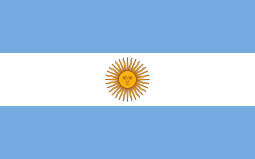2010 Swedish Open – Women's Doubles
Gisela Dulko and Flavia Pennetta were the defending champions.
They won this year's event again after beating Renata Voráčová and Barbora Záhlavová-Strýcová in the final 7–6(0), 6–0.
| Women's Doubles | |
|---|---|
| 2010 Swedish Open | |
| Champion | |
| Runner-up | |
| Final score | 7–6(0), 6–0 |
Seeds








Draw
Key
- Q = Qualifier
- WC = Wild Card
- LL = Lucky Loser
- Alt = Alternate
- SE = Special Exempt
- PR = Protected Ranking
- ITF = ITF entry
- JE = Junior Exempt
- w/o = Walkover
- r = Retired
- d = Defaulted
Brackets
| First Round | Quarterfinals | Semifinals | Final | ||||||||||||||||||||||||
| 1 | 6 | 6 | |||||||||||||||||||||||||
| WC | 2 | 4 | 1 | 4 | 7 | [10] | |||||||||||||||||||||
| 2 | 2 | 6 | 5 | [6] | |||||||||||||||||||||||
| 6 | 6 | 1 | 6 | 6 | |||||||||||||||||||||||
| 4 | 6 | 6 | 4 | 2 | 1 | ||||||||||||||||||||||
| 4 | 0 | 4 | 6 | 6 | |||||||||||||||||||||||
| 2 | 64 | 3 | 4 | ||||||||||||||||||||||||
| 6 | 7 | 1 | 7 | 6 | |||||||||||||||||||||||
| 0 | 1 | 2 | 60 | 0 | |||||||||||||||||||||||
| 6 | 6 | 5 | 7 | [2] | |||||||||||||||||||||||
| 2 | 2 | 3 | 7 | 5 | [10] | ||||||||||||||||||||||
| 3 | 6 | 6 | 3 | 2 | 4 | ||||||||||||||||||||||
| 6 | 6 | 2 | 6 | 6 | |||||||||||||||||||||||
| 2 | 2 | 64 | 2 | ||||||||||||||||||||||||
| WC | 4 | 3 | 2 | 7 | 6 | ||||||||||||||||||||||
| 2 | 6 | 6 | |||||||||||||||||||||||||
gollark: I use Arch because I can mock people with slightly outdated versions of nginx.
gollark: ``` ___ ____ ____ ___ _____ _ _ ____ _____ _____ / _ \| _ \| __ )_ _|_ _|/ \ | | | __ )| ____| ____|| | | | |_) | _ \| | | | / _ \ | | | _ \| _| | _| | |_| | _ <| |_) | | | |/ ___ \| |___ | |_) | |___| |___ \___/|_| \_\____/___| |_/_/ \_\_____| |____/|_____|_____| ____ _____ ____ ___ _ _______ / ___|_ _| _ \|_ _| |/ / ____|\___ \ | | | |_) || || ' /| _| ___) || | | _ < | || . \| |___ |____/ |_| |_| \_\___|_|\_\_____| ```
gollark: You need 3A for the Pi + possibly high-current USB devices. It *might* be okay if you don't do anything heavy on it and don't have any of those.
gollark: Those cannot always deliver enough power.
gollark: Maybe your network or power supply is wrong.
External links
This article is issued from Wikipedia. The text is licensed under Creative Commons - Attribution - Sharealike. Additional terms may apply for the media files.